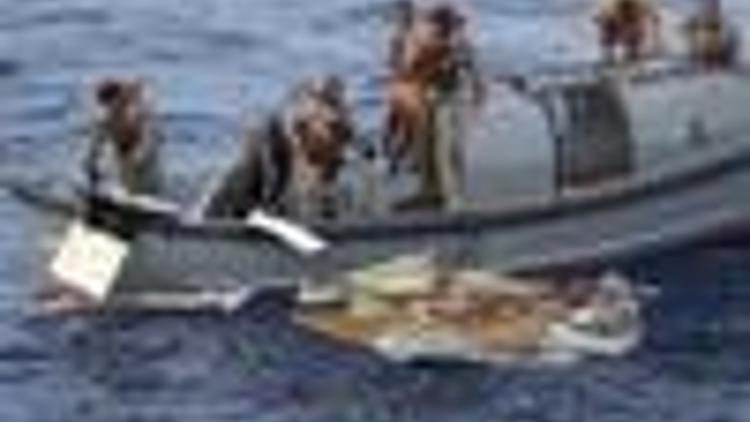17 bodies recovered from Air France crash zone in Atlantic Ocean
Güncelleme Tarihi:

FERNANDO DE NORONHA - Seventeen bodies recovered from a remote part of the Atlantic where an Air France jet came down a week ago were being transported by ship Monday to this Brazilian archipelago, officials said.
Those remains, and dozens of structural components from the plane also plucked from the waves, were expected to arrive in
From the archipelago, the bodies would be flown to the mainland coastal city of Recife for identification using dental records and DNA from relatives, air force spokesman Lieutenant Colonel Henry Munhoz told reporters late Sunday in Recife.
Brazilian and French continued to scour the crash zone 1,100 kilometers (700 miles) off Brazils northeast coast for more bodies and pieces of wreckage.
A French military nuclear submarine was expected to arrive in the area on Wednesday to hunt for the elusive black boxes from Air France flight AF 447, which came down June 1 with 228 people on board as it was flying from Rio de Janeiro to Paris.
Homing beacons on the data devices, believed to lie on the sea floor at a depth of up to 6,000 meters, will cease to operate in three weeks.
The US Navy said on Sunday it would send two towable pinger locators and a crew of around 20 to the scene later this week, in the hope of finding the data recorders.
"The first ship should head to the scene on (June) 10th," Pentagon spokesman and US navy commander Jeffrey Gordon told AFP, "they can be used for locating submarines or anything under the water that can emit a sound," he said.
The equipment can track sounds down to a depth of 20,000 feet (six kilometers).
If the voice and data recorders are found, a French research sub -- the same one that has explored the wreck of the Titanic -- will be deployed to recover them. That small sub, the Nautile, is also expected to arrive within days.
Brazilian and French officials said there was no hope of finding survivors from the downed plane.
The disaster is the worst aviation accident since 2001, and unprecedented in Air Frances 75-year history.
No distress call was received from the flight crew of the doomed plane.
Early suspicions are focusing on the Airbus A330s airspeed sensors, which appeared to have malfunctioned in the minutes before the catastrophe according to some of 24 automatic data warnings sent by the plane.
Investigators are looking at whether the sensors, known as pitots, could have iced over, possibly leading the Air France pilots to fly into a storm in the zone that day without knowing their airspeed.
Such a scenario could have resulted in "two bad consequences for the survival of the plane," Frances transport minister Dominique Bussereau told French radio.
They were, he said: "Too low a speed, which can cause it to stall, or too high a speed, which can lead to the plane ripping up as it approached the speed of sound, as the outer skin is not designed to resist such speed."
The problem with the pitots had been known for some time, possibly since 1996, according to the French weekly newspaper the Journal du Dimanche.
Air France said on Saturday it had accelerated plans begun April 27 to replace the monitoring units in its jets after noticing problems with airspeed information on its Airbus A330s and A340s since May last year.
It insisted in a statement that this should not be taken as prejudging the result of the crash investigation.
Following the crash, planemaker Airbus also warned pilots to review their procedure to cope with this problem.
France is in charge of the overall investigation into the accident, and on Saturday French Prime Minister Francois
Fillon named a special "ambassador" to oversee relations with the families of those killed on the flight.
Brazilian authorities are leading the efforts to recover bodies and debris. The first two bodies found were those of two men hauled up on Saturday. Of the 15 found Sunday, eight were recovered by a French navy frigate which had just joined the search operation.
A Brazilian navy vessel collected the other nine, comprising four men, four women and one body in such bad condition it was impossible to determine the sex.

